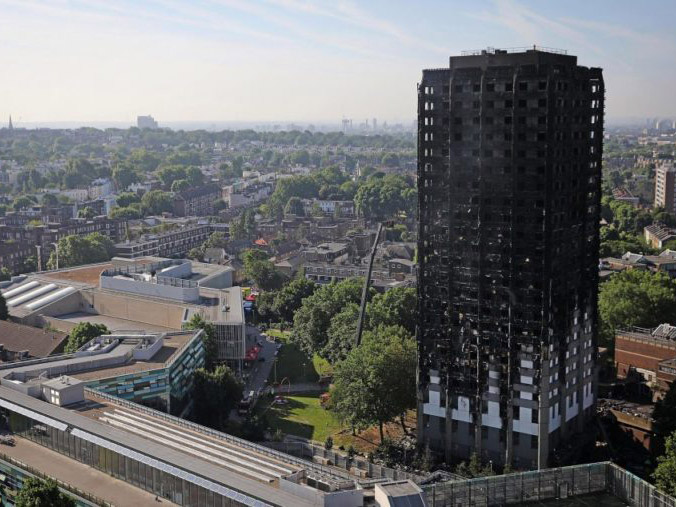In the wake of the Grenfell Tower tragedy last year, it emerged that the type of cladding fitted on the building may have contributed to the rapid acceleration of the fire. Since then, the government have been coordinating a Building Safety Programme to identify other buildings with similar cladding – and there’s a lot of them.
Government stats released today show that only a tiny proportion of the unsafe cladding has been totally replaced on homes across the country. Out of 158 socially-owned buildings with unsafe cladding, only seven have completed remedial works. This information comes just a few months away from the year anniversary of the Grenfell Tower fire.
Many will be shocked and disappointed by the slow progress made in completely replacing the unsafe cladding – not least the residents who are living in the affected blocks. While we’re assured that all buildings with unsafe cladding systems have interim measures in place to make buildings safe – such as 24-hour waking watches – the costs and inconvenience of this are by no means insignificant.
Confusion and uncertainty about what works can and should be done, by when, and who should pay, has led to delays and ongoing legal challenges, particularly in relation to privately owned buildings. With some building owners now saying remedial works might take years to complete, the government should step up and take responsibility to avoid further delays.
The progress so far
Progress in replacing unsafe cladding has been slow. The government’s releasing monthly data updates about affected tower blocks via the Building Safety Programme. The blocks that are included in these updates are ones that are over 18 meters high and where cladding and insulation materials have failed testing – meaning the materials are considered too combustible for use on residential buildings.
As of the most recent publication on 28 March 2018, 306 buildings over 18m were confirmed as having cladding systems that fail current safety guidance. 158 of confirmed cases are buildings owned by social landlords – councils and housing associations – and 65 local authority areas in England contain at least one of the affected blocks.
Of the 158 socially-owned buildings found to have unsafe cladding, 103 have started remediation works, but only seven have totally completed all works. That means that 35% of buildings have not started works on removing or replacing the unsafe cladding
The barriers to completing works
There seem to be several reasons for why remediation progress has been so slow. Based on data from the Building Safety Programme and insight we’ve gathered from housing sector organisations, building owners and councils, some of the reasons include:
- the complexity of removing the unsafe cladding in some circumstances, especially where the materials are built into the structure of the building, unlike cosmetic cladding that could be removed more easily
- uncertainty about the materials that are safe to use, because current guidance isn’t clear enough
- uncertainty about whether the Hackitt Review, which is looking into building safety, will come out with recommendations that will be different to existing guidance
- shortages of materials and labour capacity to undertake all remedial works
- questions around liability for repair works – there is uncertainty about who should pay for the remedial works especially with building owners and leaseholders in private blocks
- the 36 councils that have applied for financial support from government to undertake works have still not received any funding
- some building owners have been informed of other issues following updated fire risk assessments, which has meant works beyond replacing unsafe cladding are also being undertaken – for example, the installation of fire doors
What should be done?
There are some reasons for why remedial works have been slow that to some degree are unavoidable – such as the complexity of how some buildings are built meaning that failed cladding systems can’t be removed quickly. However, there are some reasons – such as uncertainty about what materials are safe – that can and should be addressed.
Building and fire safety are crucial for public safety and go to the heart of the purpose of government. We urge the government to provide clarity on fire safety, as well as clearer guidance on who should pay for and carry out these essential works – government should set a timetable for when all works must be complete.

